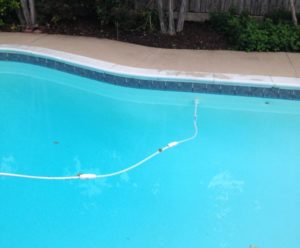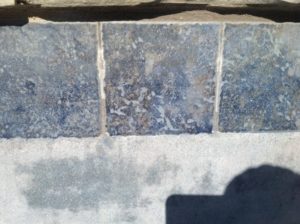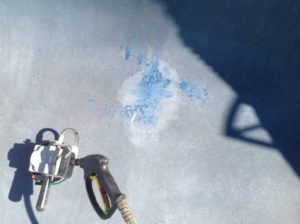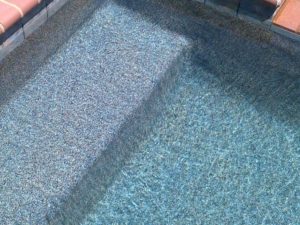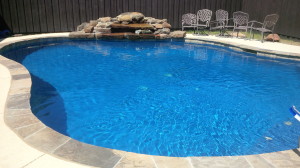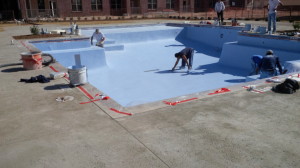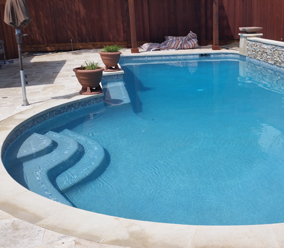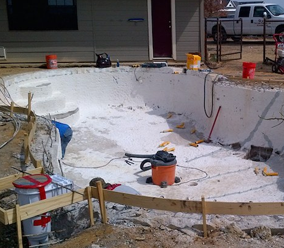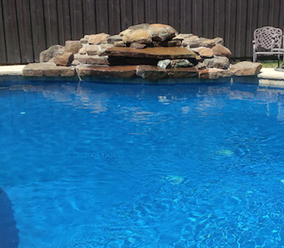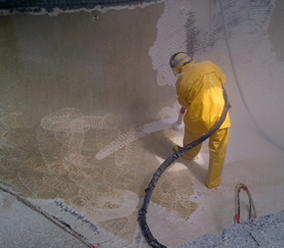This pool has been replastered 2 times with our Hydro Demo Replaster process in less than 3 years. When you own the company you can change your mind once or twice. Especially when you own the best prep process on the market.
The latest finish in the pool is Arctic Coast, from Universal Cement, and it is a keeper. It was drained in January during freezing temps to polish the surface after 3 seasons of use. Doing this gives it the look of a brand new finish with Arctic Coast.
The telling part of this story is the polishing of this surface with the pool empty during freezing temps for 2 days. The gentlemen in the picture are well traveled experts in plaster finishes from Universal Cement. They came to Carrollton, TX to help me with this process. Kelly, with Universal Cement, told me not a single inch of my plaster was hollow. In reality I knew that, but I love to hear that from someone with whom I hold so much respect for.
This would be a major gamble to try with any other replaster prep process(bond coat or chip out). Considering the pool had been replastered 2 times and was drained and left empty during freezing overnight temperatures.
We guarantee our prep process to not be hollow. Our Hydro Demo Replaster process is unmatched in the pool industry. G&B is now going to start offering our Hydro Demo Replaster process for hire to other contractors for their prep jobs.




